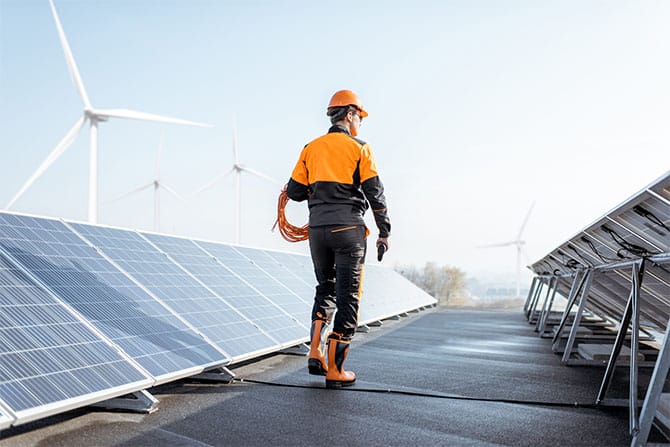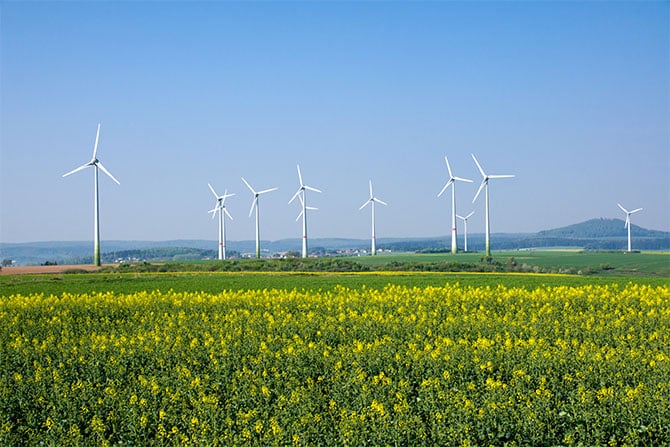Whether e-mobility, Internet from everywhere, working from home or energy transition: the world is currently seeing a 180-degree turn. Energy transition, in particular, is bringing about massive changes to our lives. One of its most important mainstays is wind energy. But this – like so many things – would not be possible without plastics.
How come? Energy transition is bringing more renewable energy into everyday life. Our energy will then come from hydro, wind and solar plants instead of from nuclear or fossil fuels. Wind power is the most important source of energy, accounting for around 27 percent of electricity generation. Solar energy has a share of 10.5 percent and hydropower 3.7 percent. In other words, energy transition targets cannot be achieved without wind power.
Aber was hat das mit Kunststoff zu tun? Ganz einfach: Keine Kunststoffe – keine Windenergieanlagen. Oder genauer gesagt: keine Rotorblätter. Bei den größten und modernsten Anlagen spannen die sich schon einmal auf stattliche 108 Meter – zum Beispiel bei den neusten Windturbinen auf dem Meer. 14 Megawatt Energie soll die größte, geplante Windturbine produzieren: Das ist so viel Energie, wie rund 18.000 Durchschnittshaushalte verbrauchen.
But what does this have to do with plastics? It’s quite simple: no plastics – no wind turbines. Or more to be precise, no rotor blades. The span of the most modern and largest turbines can reach 108 metres – for example, in the case of the latest offshore wind turbines. The largest planned wind turbine is designed to produce 14 megawatts of energy. That’s as much energy to meet the needs of around 18,000 average households.
The long blades have to withstand enormous forces, so they have to be strong and stable. Nevertheless, the materials must be light enough for the systems to be easily installed and operated. The balancing act is that the material has to be both strong and light at the same time. Plastics can do just that.

This is where fibre-reinforced polymers, or FRPs for short, are used. FRPs are very light and extremely robust and are therefore also used in motor racing and aviation. Unlike materials made of metal, fibre-reinforced polymers can be ideally aligned to loads.
Wind turbines have to withstand rough weather conditions at sea and in storms. This is precisely why FRPs are the perfect solution. They are also very durable, withstand massive environmental conditions and do not rust. This also reduces any maintenance effort required.
Not everyone likes a wind turbine, but without wind energy we won’t achieve our climate targets. Without plastics, on the other hand, there is no wind power. If we combine both, we can look forward to a viable, sustainable future.

Photo credit: iStock.com/Dimitris66 , iStock.com/RossHelen , iStock.com/elxeneize